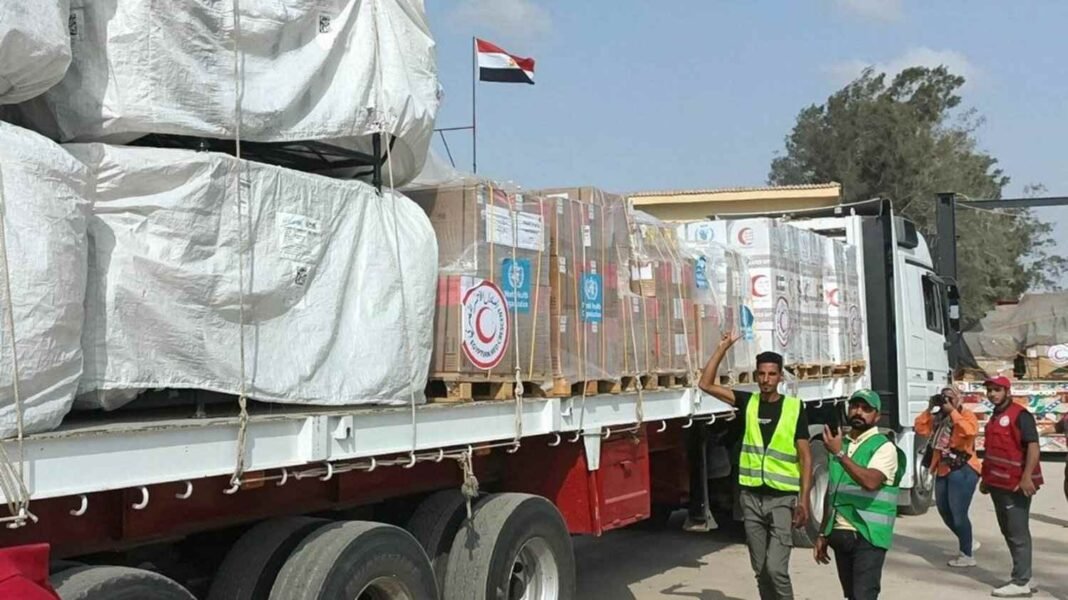To the east of Gaza, near Al-Udeid airbase in Qatar, a large amount of humanitarian aid is being shifted to a US military plane, which is to be delivered to a famine-stricken region of Gaza. The aid boxes are attached to parachutes, which will open once they reach the sky above Gaza. Different countries, including the UAE, Egypt, Jordan, France, and Germany, will take part in this multinational airdrop of humanitarian aid to feed starving Gaza citizens.
In the 18th mission of dropping ready-made meals in the small war zone, 40,000 meal boxes were dropped after covering a 6-hour-long trip starting from Doha. The process is not very efficient and is difficult and expensive to handle, as it resulted in 18 casualties earlier this week due to a stampede, and many drowned trying to take the aid that accidentally fell into the sea.
The commander of this mission, Maj. Boone, said, “We’re very aware of all the news, and we’re trying to limit casualties. [We’re doing] literally everything we can. We use a chute that falls at a slower rate to give Gazans more time to see the parachute and get out of the way. We also have assets overhead that clear the drop zone, so we won’t drop if there’s any group of people there.”
He also added that the officials responsible for the aid operation have carefully planned the route and are trying to land the aid in open areas besides the shore, but some of the parcels dropped into the sea due to parachute malfunctions. Some parts of aid are wasted in this way, but it saves people from getting hurt by the aid falling from the sky at high speeds. Nothing is easy.
People try to reach aid in various risky ways, and many are left without receiving any aid. Hamas is continuously asking the West to stop the “useless” aid due to the casualties associated with it. According to Hamas, this aid is “a real danger to the lives of hungry civilians.”
While answering whether this approach is good or not, Major Than DeCamp, the US Air Force representative, said, “It’s not perfect. We know there’s upwards of two million people who need food on the ground—innocent civilians who did not ask for this conflict—and we’re dropping meals in the tens of thousands. Does it feel like a drop in the bucket? Maybe a little bit, but if you’re a family on the ground who got some of this aid, it can be a lifesaver.”
A journalist, while working on Gaza grounds, counted 11 air drops in a day. Many residents spend days looking at the sky for aid drops.
Ahmed Tafesh, a resident of Gaza City, while talking about his efforts to get aid, told the media, “We have tried twice this morning, but in vain. If we can at least get a can of beans or hummus to support ourselves, we hope we will eat today. Hunger has consumed most people; they have no energy anymore.” The United Nation’s court ordered immediate aid after the warning of a severe famine in Gaza in a recent assessment.
Maj. Boone said, “If people are starving, and we’re giving them food, that’s the best we can do right now. I know other people are trying [approaches] that take more time. My team of C17s was notified and out here within 36 hours, doing everything in our power to get food to people who needed it.”
Israel rejects the allegations about blocking the aid and calls them “wholly unfounded.” It is said that Hamas is responsible for stealing aid.
A small amount of food is being dropped on a whole desperate and starving population. The images and videos of starving Gazans are changing politics in America.




